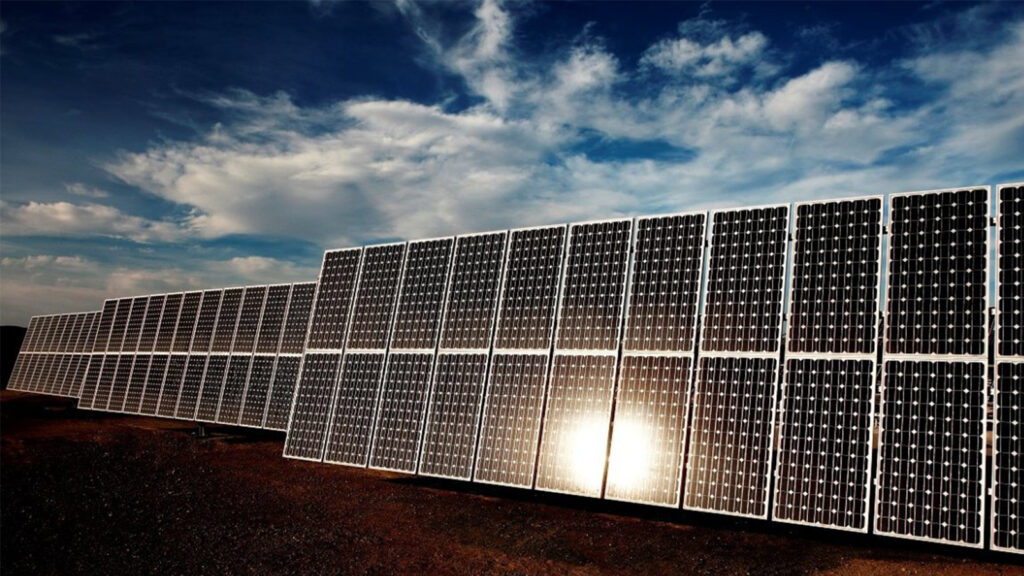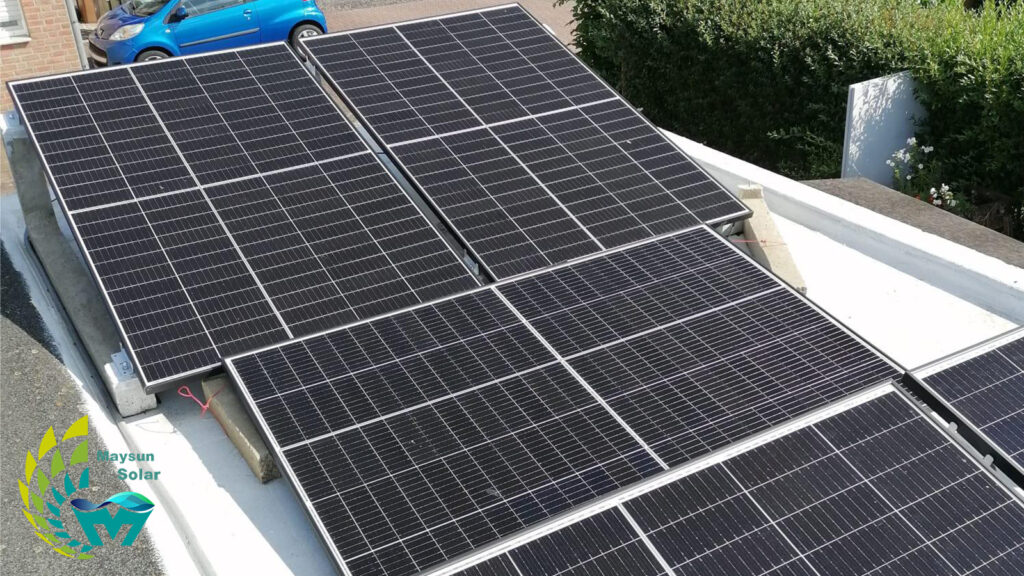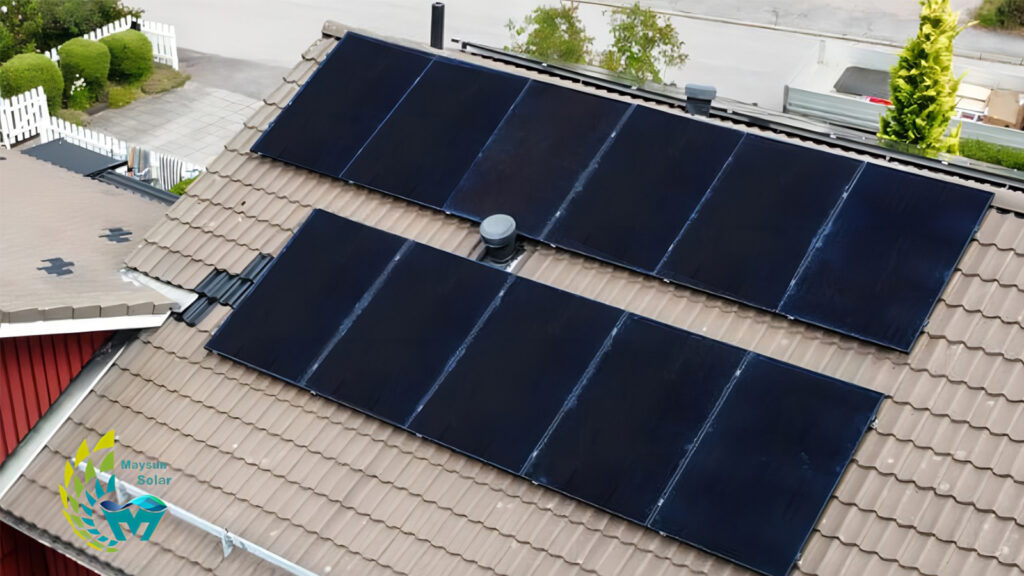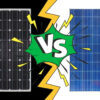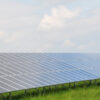Solar panels, commonly referred to as photovoltaic panels, generate electricity by capturing and transforming direct sunlight into energy. Since solar panels interact directly with the sun, many people are curious as to whether air temperature has an impact on how solar panels function. For instance, is a solar panel more or less effective in a hot environment? Temperature has a significant impact on how effectively your solar panels work, even though sunshine intensity and duration are more important.
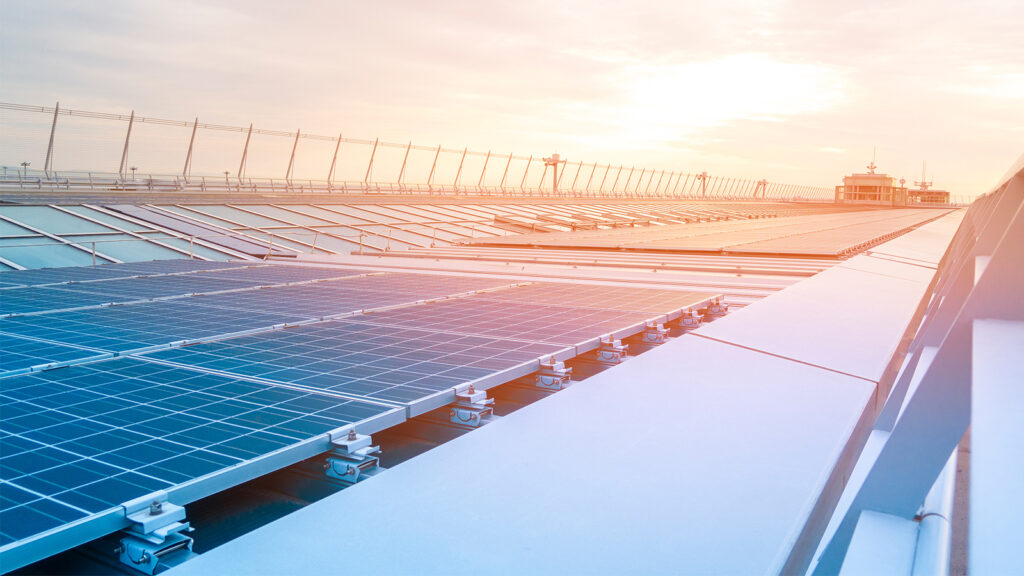
How Your Solar Panels Are Affected by Hot Air?
Many consumers are curious about the specifics of how heat fluctuations impact the operation of solar panels. Normally tested at 77°F, solar panels are rated for maximum performance between 59°F and 95°F. However, in the summer, solar panels can become as hot as 149°F, but when this temperature is reached, the efficiency of the panel may decrease.
Solar panels generally have 3 temperature coefficients: open circuit voltage, peak power, and short circuit current. When the temperature rises, the output power of the solar panel decreases. The peak temperature coefficient of solar panel is about -0.34 ~ 0.44% / ℃, that is, the temperature rises, the power generation of solar panel decreases, theoretically, the temperature rises by one degree, the power generation of PV power plant will be reduced by about 0.44%.
Common sense may suggest that since solar panels require sunshine to operate, warmer air would aid their performance or output, but that isn’t the case. Solar panels don’t require any heat in any form, even if they do use sunlight to generate electricity. On warm, dry days with temperatures of 90 degrees Fahrenheit or more, solar panels may actually operate at 10 to 25 percent lower efficiency.
Your solar panels will operate less effectively when the ambient air temperature rises. Most panels begin to lose roughly 1% of their peak production for every degree the temperature rises after they reach triple digits. homeowners who endure sweltering summertime temperatures can comprehend.
Having said that, remember that solar panels are composed of materials that are incredibly strong and made to survive harsh outdoor circumstances, such as scorching summer days and icy winter weather. Additionally, elements like air temperature, location, amount of direct sunshine, and roofing materials will all affect how hot your solar panels will be. Solar contractors with experience know how to choose and install solar panels to minimize the effect of heat on the solar panels’ efficiency.
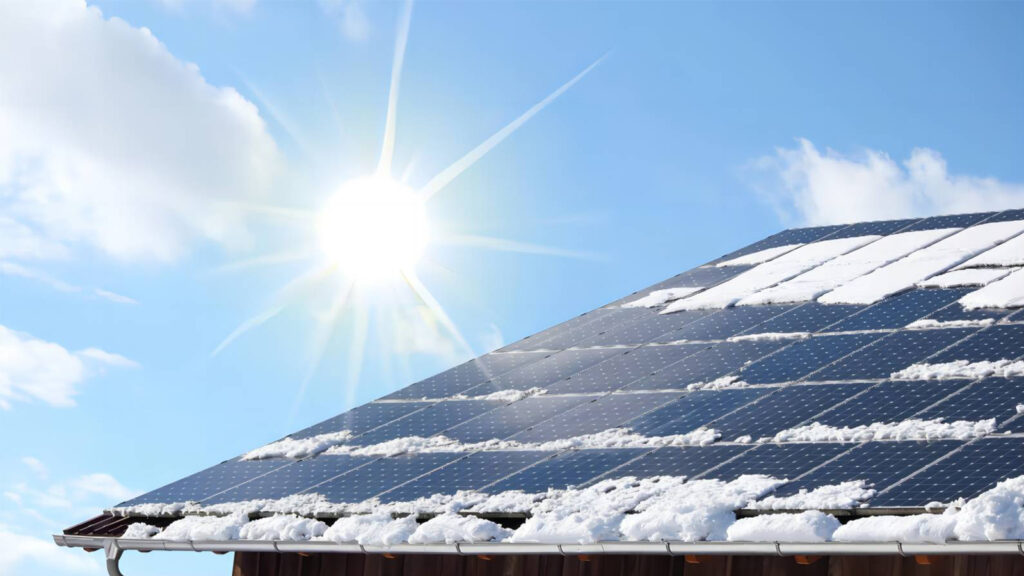
How Your Solar Panels Are Affected by Cold Air?
You may have heard individuals question the effectiveness of solar panels in chilly climates. Although not as significantly as warm air, ambient cold can also have an impact on the performance of your solar panel. Some people might even believe that when it’s cold outside, solar panels stop operating. All of these claims are untrue. But in fact there is no evidence that low temperatures have a direct impact on the efficiency of solar panels, the main factors are shading of solar panels by snow and ice in winter and shorter hours of sunlight.
Snow and ice are unfavorable conditions that lower solar panel efficiency in the winter. The solar panel is resilient. They are resistant to ice damage. After a chilly night, solar cells simply need some time to thaw. Your solar panels’ efficiency is decreased when the first sun rays contact them because some of the sunlight is blocked by snow or ice, which lowers their output. Photovoltaic solar panels still generate up to 80% more electricity in the summer than they do in the winter on average. The primary causes are (as you would have guessed) shorter daylight hours each day and an increase in cloud cover during the winter, so the total amount of electricity generated in the winter is reduced.
In fact, if the sky is generally clear, cool ambient air can increase output. According to tests, solar panels are most productive at 77 degrees Fahrenheit.
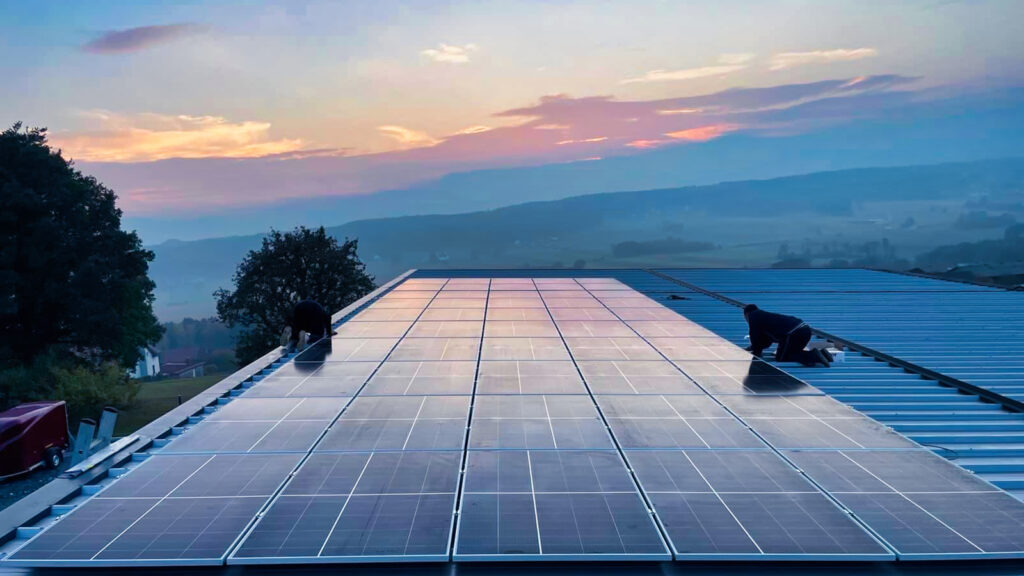
What happens when the solar panels’ temperature rises?
It’s helpful to have a solid understanding of the difference between the energy of electrons in a low energy state and electrons in the excited state if you have photovoltaic solar panels installed at home or plan to get some in the near future. This difference is responsible for the power output produced by solar panels.
Electrons are trapped in a low energy state in a solar cell. The excited state, which these electrons attain when they are given additional energy, enables them to migrate and break the bond. Conduction can be accomplished by energized electrons. They receive the additional energy that pushes them into the excited state from either heat or light (sunlight).
How much of an energy difference (voltage) there is between these two states determines how much electricity a solar cell can produce. By raising the energy of bound electrons, an increase in temperature changes the properties of semiconductor materials. As a result, the energy difference needed to reach the desired state is less, which lowers the output and efficiency of solar panels.
The heat from the sun causes solar panels to heat up as they absorb sunlight. Crystalline silicon, a typical component of solar cells, does little to help keep them from heating up either. Due to silicon’s excellent heat conductivity, solar cells actually experience a faster rate of heat buildup during hot, sunny days.
In a nutshell, hotter solar panels utilize the same amount of sunshine to produce less energy.
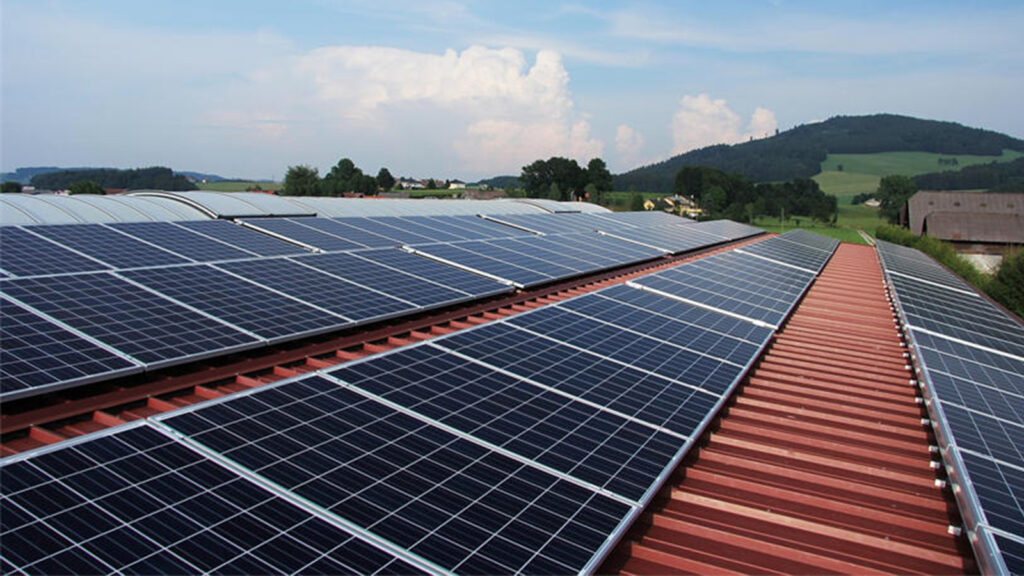
How to reduce the impact of heat on solar panels?
The majority of authorized installers use measures to enhance natural cooling of solar systems since they are aware of the impact that higher temperatures have on energy output.
Leaving at least six inches of space between the roof and the panels to allow air to circulate from both sides is a recommended practice for maximizing efficiency. However, it’s not usually a smart idea to install your panels too far away from the roof. If the opening is too large, leaves and twigs may collect underneath the array and harm your roof or solar panels.
Ground-mounted solar panels are a good option if you live in a hot environment because they receive the greatest airflow and therefore maintain a lower temperature.
Estimates show that at the same location, the temperature difference between solar panels that are affixed to the roof and those that are put on the ground can reach 10 °C (50 °F).
Purchasing solar panels with a temperature coefficient that is as near to zero as possible is the best option. The variation in annual total power production can be substantial. The manufacturer’s data sheet is the finest source of information about the panel’s heat tolerance. The phrase “temperature coefficient (Pmax)” is used there. This is the power temperature coefficient at its maximum. It explains how much electricity the panel will lose every 1°C increase in temperature above 25°C. @ STC (the nameplate power of the module is determined at the Standard Test Condition temperature).
There will be differences in the temperature coefficients of solar panels made by various manufacturers. Because of this, each solar panel manufacturer includes a temperature coefficient value (Pmax) with the details of their product.
In general, the majority of solar panel coefficients fall between -0.20 and -0.50% per degree Celsius. The solar panel is less impacted by the temperature rise, the closer this figure is to zero.
If your solar panels, for instance, have a coefficient of minus 0.4 percent, their output will decrease on hot days by almost twice as much as it would if their coefficient was simply minus 0.2 percent per degree Celsius.
White or light-colored roofing reflects sunlight more and does not heat up like dark roofing, it’s also a smart and practical way to reduce the temperature around your solar panels.
Try to choose to clean your solar panels in the morning or evening. Be sure not to clean your solar panels during the hottest part of the day, as this can easily cause the glass to shatter and your solar panels will be irreparably damaged. Solar panels are not subjected to rapid temperature shocks in a water cooling system as they are in a rinsing system.
Maysun Solar’s solar panels can effectively minimise the adverse effects of temperature on the efficiency of solar panel operation. The vast majority of Maysun Solar’s solar panels have a PMAX temperature coefficient of -0.34%/°C, so they work very efficiently!
This customer is very smart, he painted underneath the solar panels, which makes the power generation high in the middle of the day and in the afternoon!
Maysun Solar’s shingled solar panels have an elegant full black look that better suits European architectural styles. The PMAX temperature coefficient of Maysun Solar shingled solar panels is -0.34%/°C, they operate at lower temperatures and work more efficiently!
Since 2008, Maysun Solar has specialized in producing high quality photovoltaic modules. We have a wide variety of full black, black frame, silver, glass-glass solar panels which use half-cut, MBB, IBC and Shingled technologies to choose from, and they offer superior performance and stylish designs that will blend in perfectly with any building. Maysun Solar has successfully established offices, warehouses, and long-term relationships with excellent installers in numerous countries! Please feel excited to contact us for the latest module quotations or any PV-related inquiries.

Empowering Factories with Solar Energy A Strategic Tool for Controlling Production Electricity Costs
Commercial and industrial solar is becoming a key solution for factories to reduce electricity costs and hedge against price fluctuations. This article systematically analyzes its deployment models, cost advantages, and sustainable value pathways.

How Businesses Can Offset Carbon Taxes with Solar Power
This article analyzes the latest carbon tax policies and photovoltaic deduction strategies, helping European businesses legally reduce taxes, increase profits through solar investment, and achieve a win-win situation for both economy and environment.

Forecast and Response: Seizing the Next Decade’s Growth Dividend in Europe’s Commercial and Industrial Photovoltaics Market
Maysun Solar analyzes the growth trends of commercial and industrial photovoltaics in Europe over the next ten years, from policies and ESG to technological innovation, helping companies seize the initiative in the energy transition.

How to Calculate Solar System ROI and Optimize Long-Term Returns?
Solar power is becoming a key solution for businesses to reduce costs and improve efficiency. Accurately calculating ROI and optimizing long-term returns are essential to maximizing investment value.

Will Agrivoltaics Affect Crop Growth?
Agrivoltaics combines solar energy and agriculture to reduce up to 700 tons of CO₂ per MW, improve water use, and boost crop growth for sustainable farming.

6.5 Billion Loss Hits Photovoltaics: Reshaping or Elimination?
In 2025, the photovoltaic market may see a turnaround as some companies take early action. A €6.5 billion loss is driving businesses to explore new growth areas like energy storage and hydrogen. Which giants will break through? Industry transformation is accelerating!

